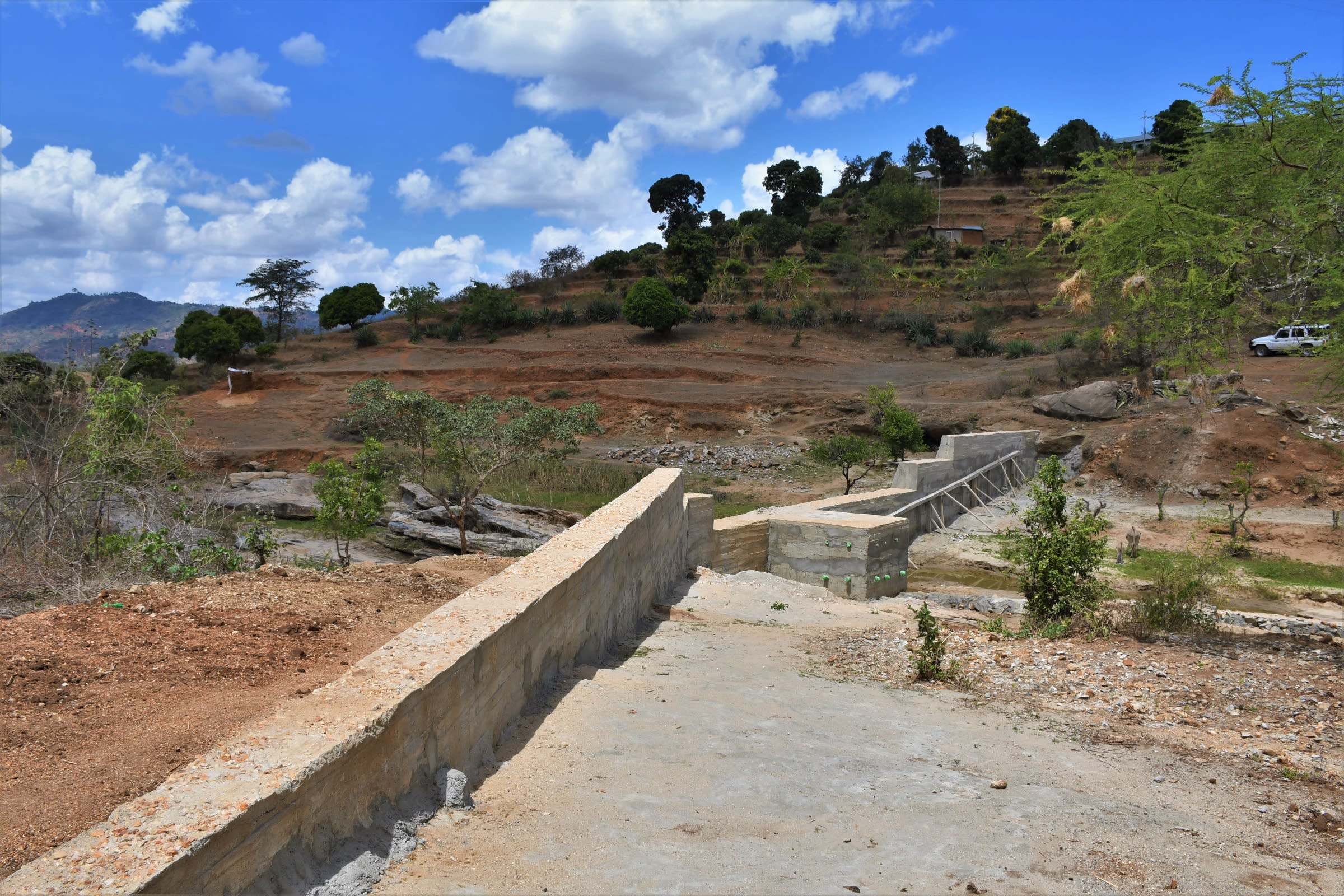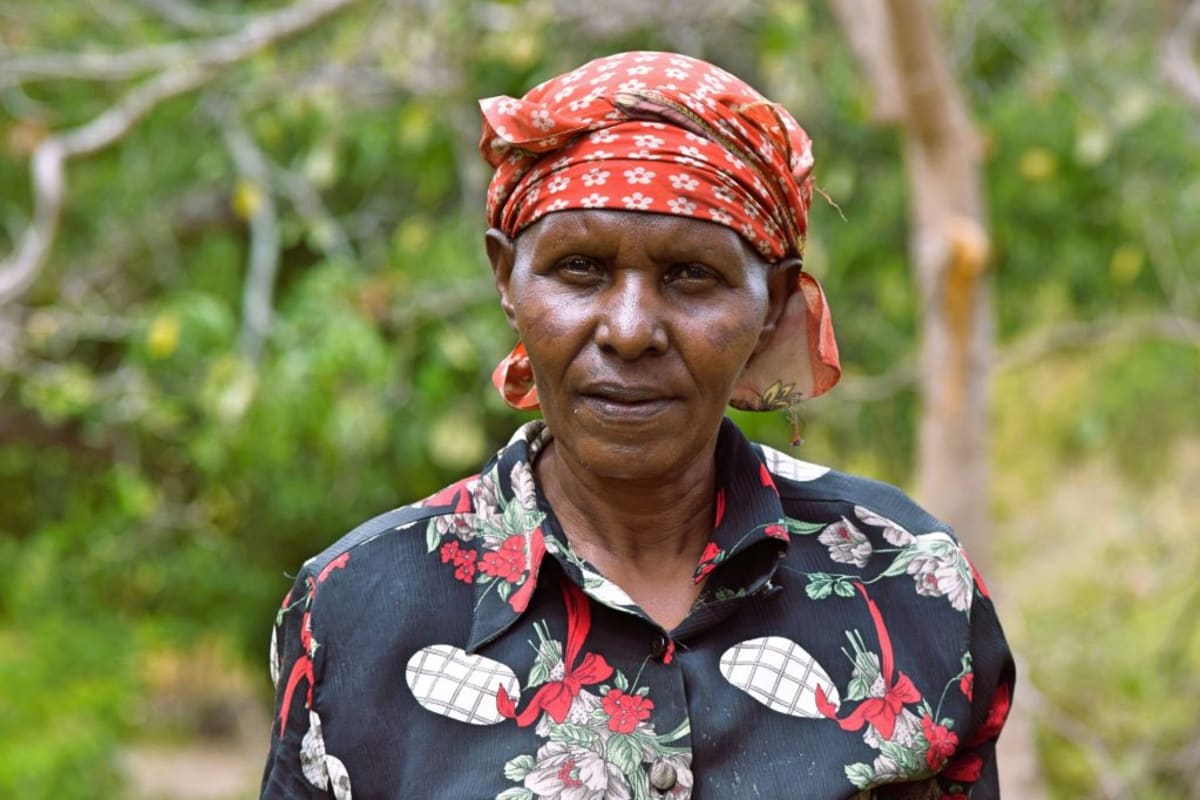The Wathanaa Self-Help Group is found in Nduumoni village, Kenya. The area is a rural, fairly vegetated, and peaceful region. It is sparsely populated, with most houses made of bricks.
The 2,875 community members here suffer a lot during the dry seasons because of their community's lack of water. An average day for the community members starts at the crack of dawn when women walk to the riverbed. All roads here lead to the Nduumoni River, where people go to fetch water for the day.
The distance covered by some community members to access the river is very far, meaning they have an exhausting daily walk back and forth while carrying their heavy water containers on their backs. Because water levels in the early morning are generally higher than later in the day, once the women arrive at the river, they collect the water and return home as quickly as possible.
The river, however, dries up quickly each dry season. People have to dig very deep scoop holes into the riverbed to access water for much of the year. The scoop holes are usually overcrowded because the water table is shallow, and typically only one scoop hole has water at a time. Hence, on any given day, the entire community may be depending on a single scoop hole for water.
If women find themselves stuck in line for water, their kids back at home have to leave for school hungry, going without their breakfast for the day. Only if the mothers return home early enough can they also cook and feed their children breakfast.
"I am an old woman now, and water scarcity affects me a lot. During the dry seasons, I have to dig very deep scoop holes to fetch water. If I get water here, my life will change," said Rebecca, a 78-year-old farmer.
As a result of the time lost to the task but also the inability to bring more water home, most families have to ignore basic hygiene and sanitation practices in their homesteads. This often means sacrificing things like handwashing, doing the laundry, bathing, and washing dishes just to have enough water for drinking and cooking.
An insufficient supply of water also leads to high poverty levels because people cannot engage in other income-generating activities as most of their time is spent searching for water.
Because the open river is exposed to various contaminants such as animal and human waste, dirt, and farm chemicals, it is unquestionably unsafe to drink. But without another choice, people often end up sick from the water. While families struggle to afford medicine and hospital visits to treat typhoid and cholera, the high and recurring costs further drain their financial resources.
"Insufficient water supply has contributed highly to the poverty levels in the region because we are unable to farm well. We spend a lot of our finances on treatment and fetching water at times. Life is hard without water," said Bramwell, a local farmer.
Our main entry point into the Nduumoni Community has been the Wathanaa Self-Help Group, which is comprised of households that are working together to address water and food scarcity in their region. These members are like our hands and feet in constructing water projects and spreading the message of good hygiene and sanitation to everyone in their area.
The most common livelihood in this region is farming, with people focusing on subsistence crops. Casual labor jobs such as constructing people's homesteads or farming on others' land are also common among young adults.
What We Can Do:
Sand Dam
After the community picked the ideal spot, our technical team went in and proved the viability by finding a good foundation of bedrock. Now, our engineers are busy drawing up the blueprints.
We are unified with this community to address the water shortage. As more sand dams are built, the environment will continue to transform. As the sand dams mature and build up more sand, the water tables will rise. Along with this sand dam, a hand-dug well will be installed to give community members an easy, safe way to access that water.
Building this sand dam and the well in this community will help bring clean water closer to hundreds of people living here.
Training
These community members currently do their best to practice good hygiene and sanitation, but their severe lack of water has hindered reaching their fullest potential.
We will hold hygiene and sanitation training sessions with the Wathanaa Self-Help Group and other community members to teach about important hygiene practices and daily habits to establish at the personal, household, and community levels. This training will ensure that participants know they need to make the most out of their new water point as soon as the water is flowing.
One of the most important topics we plan to cover is handling, storing, and treating water. Having a clean water source will be extremely helpful, but it is useless if water gets contaminated by the time it is consumed. We will also emphasize the importance of handwashing.
The community and we strongly believe that all of these components will work together to improve living standards here, which will help to unlock the potential for these community members to live better, healthier lives.
We typically work with self-help groups for three to five years on multiple water projects. We will conduct follow-up visits and refresher training during this period and remain in contact with the group after all of the projects are completed to support their efforts to improve sanitation and hygiene.

 Sand Dam
Sand Dam
 Rehabilitation Project
Rehabilitation Project














 "We also foresee the improvement of our climate and the environment as the water table and recharge will be high, thus enabling the regeneration of [the] natural environment," Prosper continued.
"We also foresee the improvement of our climate and the environment as the water table and recharge will be high, thus enabling the regeneration of [the] natural environment," Prosper continued.



















